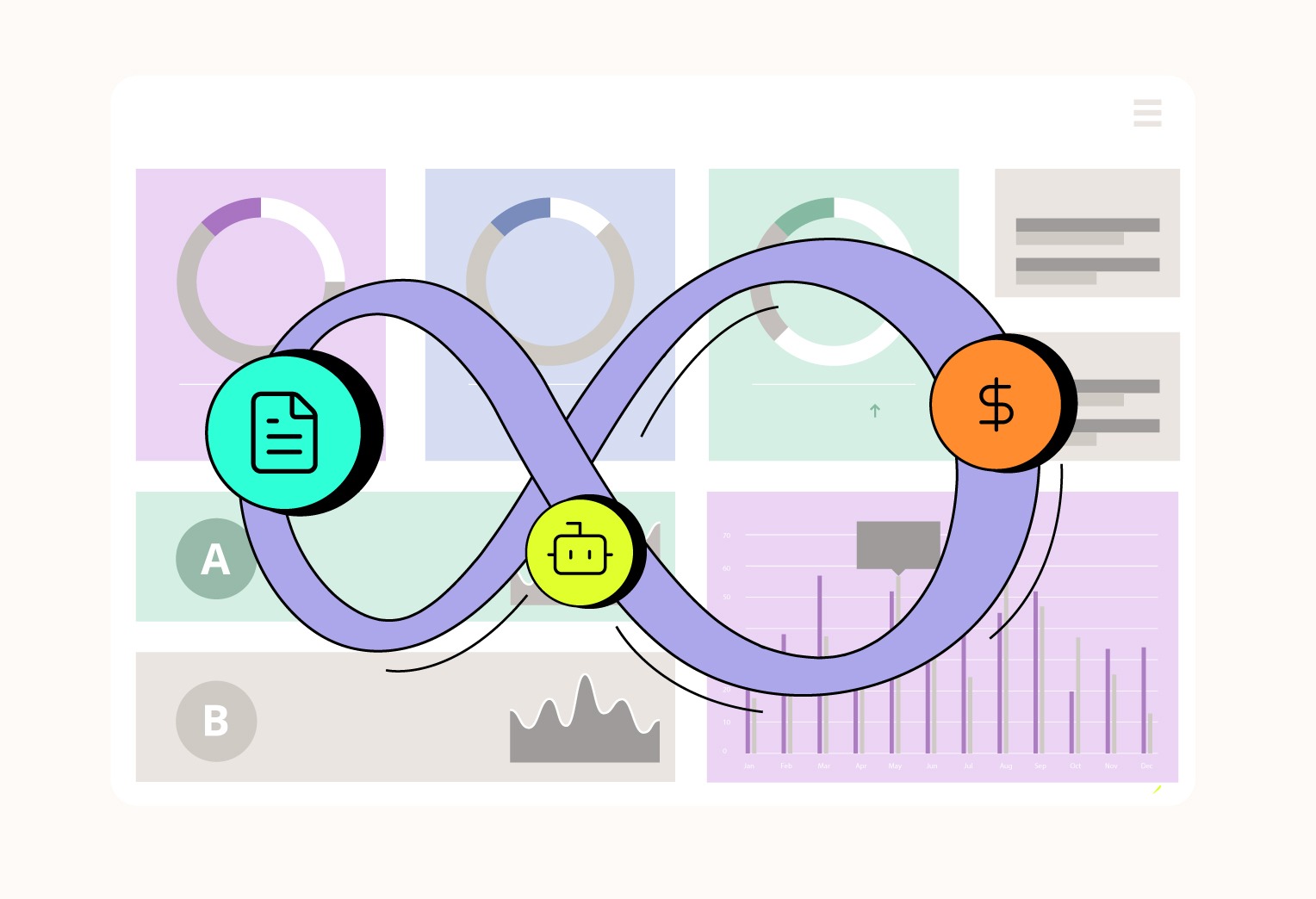In the world of finance, success hinges on the ability to navigate a complex web of transactions, assets, and liabilities. One crucial aspect of this financial puzzle is the management of accounts receivable.
Businesses often need help with outstanding invoices, delayed payments, and uncertainty about their cash flow. However, by integrating the concept of observability into their accounts receivable processes, organizations can gain a clearer, more comprehensive view of their financial health.
The significance of accounts receivable
Before we delve into the realm of observability, let's first understand the importance of accounts receivable. Accounts receivable, often abbreviated as AR, represents the outstanding payments a company has yet to receive from its customers or clients. Essentially, it's the money owed to the business for goods or services already provided.
Accounts receivable plays a pivotal role in a company's financial well-being. It's a vital asset that contributes to the liquidity and cash flow of the organization. Managing accounts receivable effectively can boost a company's working capital, allowing it to cover operational expenses, invest in growth opportunities, and ensure financial stability.
The challenge of accounts receivable management
Despite its significance, managing accounts receivable can take time and effort. Businesses frequently encounter several challenges in this area, including:
1. Late payments
Customers may delay payments for various reasons, from financial constraints to administrative oversights. Late payments can disrupt a company's cash flow, making it challenging to meet its obligations.
💡For instance, late payments can disrupt cash flow; on average, businesses deal with 23% of their invoices paid late.
2. Tracking and reporting
Tracking outstanding invoices and generating accurate reports can be time-consuming and error-prone, especially for businesses with a high volume of transactions.
💡For instance, tracking and reporting errors can cost businesses an estimated 5-10% of their annual revenue.
3. Incomplete information
In some cases, businesses lack visibility into the status of their accounts receivable. This lack of information can lead to uncertainty and impede financial planning.
💡For instance, 33% of companies cite incomplete information as a major challenge in managing accounts receivable.
4. Aging receivables
As invoices age, the likelihood of receiving full payment decreases. Managing aging receivables is essential to minimize losses.
💡For instance, aging receivables can result in significant losses, with the likelihood of full payment dropping by 1% for every day an invoice goes unpaid.
The role of observability
Observability is a concept borrowed from the field of software engineering and system monitoring. It refers to the ability to gain insights into the internal state and functioning of a system by examining its external outputs. When applied to accounts receivable, observability involves creating transparency and visibility into the financial processes related to outstanding payments.
Here's how observability can revolutionize accounts receivable management:
1. Real-time tracking
With observability tools and technologies, businesses can track the status of their accounts receivable in real-time. This means having immediate visibility into which invoices have been paid, which are overdue, and which are pending.
💡For instance, observability tools enable real-time tracking, reducing the impact of late payments.
2. Data analytics
Observability empowers organizations to analyze their accounts receivable data comprehensively. Businesses can identify patterns, trends, and anomalies in their financial processes by leveraging data analytics. This analytical insight can inform decision-making and optimize cash flow management.
💡For instance, data analytics can uncover patterns and trends; 80% of companies using data analytics report improved collection rates.
3. Predictive modeling
Through observability, companies can employ predictive modeling to forecast future accounts receivable performance. Predictive models take historical data into account to estimate when payments are likely to be received, helping organizations plan for their financial future with greater accuracy.
💡For instance, predictive modeling can increase accuracy in forecasting future receivables; predictive analytics reduce bad debt by an average of 10%.
4. Automation
Automation is a key component of observability. By automating routine tasks such as sending payment reminders or generating invoices, businesses can reduce manual errors and free up valuable human resources for more strategic activities.
💡For instance, automation can save businesses time and money; on average, businesses can reduce invoicing costs by 60% with automation.
5. Customer insights
Observability also extends to understanding customer behavior. By analyzing how and when customers make payments, businesses can tailor their invoicing and follow-up strategies to improve their chances of receiving timely payments.
💡For instance, understanding customer behavior through observability can increase the likelihood of timely payments; 70% of companies say understanding customer behavior is important for improving collections.
Implementing account receivable observability
To harness the benefits of account receivable observability, businesses can follow a systematic approach:
1. Choose the right tools
Invest in observability tools and software designed for financial management. These tools should provide real-time tracking, data analytics, and automation capabilities.
2. Data integration
Integrate your observability tools with your accounting software and other relevant systems to ensure seamless data flow. This integration enhances the accuracy and completeness of your accounts receivable data.
3. Define key metrics
Identify key performance indicators (KPIs) related to accounts receivable, such as average collection period, aging of receivables, and payment velocity. These metrics will serve as benchmarks for evaluating your financial performance.
4. Implement automation
Automate routine tasks like sending payment reminders, generating invoices, and reconciling payments. Automation not only reduces human error but also accelerates the accounts receivable process.
5. Train your team
Ensure that your finance team is well-versed in using observability tools and interpreting the insights they provide. Training is crucial for maximizing the benefits of observability.
6. Continuously monitor and adjust
Observability is an ongoing process. Regularly monitor your accounts receivable metrics and adjust your strategies based on the insights you gain. This adaptability is essential for staying agile in a dynamic financial landscape.
The bottom line
In the modern business world, financial success hinges on adaptability and informed decision-making. Integrating observability into accounts receivable management allows organizations to gain clarity in their financial processes, leading to improved cash flow, reduced risks, and enhanced financial stability.
By leveraging observability tools, data analytics, and automation, businesses can transform their accounts receivable from a source of uncertainty into a strategic asset. With real-time insights, predictive capabilities, and a deep understanding of customer behavior, companies can navigate the complex terrain of accounts receivable with confidence and efficiency.
In conclusion, account receivable observability is not just a buzzword; it's a powerful approach that can revolutionize financial management and drive sustainable growth. Embracing this concept can be the key to unlocking financial success in today's competitive business landscape.
With Bluecopa's advanced account receivable observability tools, you can gain real-time insights into your outstanding invoices, track payment trends, and predict cash flow with precision. It provides a high-level overview of the AR process and quickens decision-making for executives.

Book a demo today and discover how Bluecopa can transform your accounts receivable processes.
You might also like
Here are some other posts from us you may enjoy reading!
Ensuring Accurate Payouts With Accounts Payable (AP) Observability.


.webp)

.jpg)